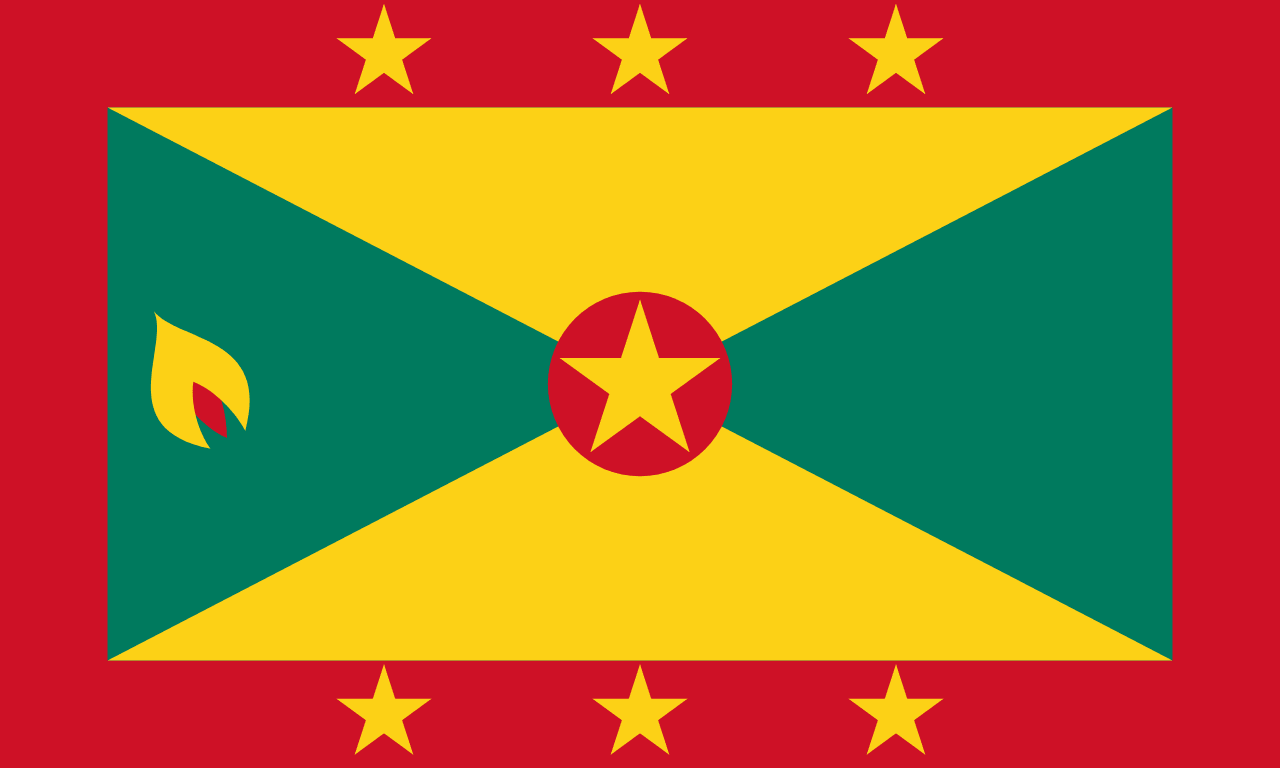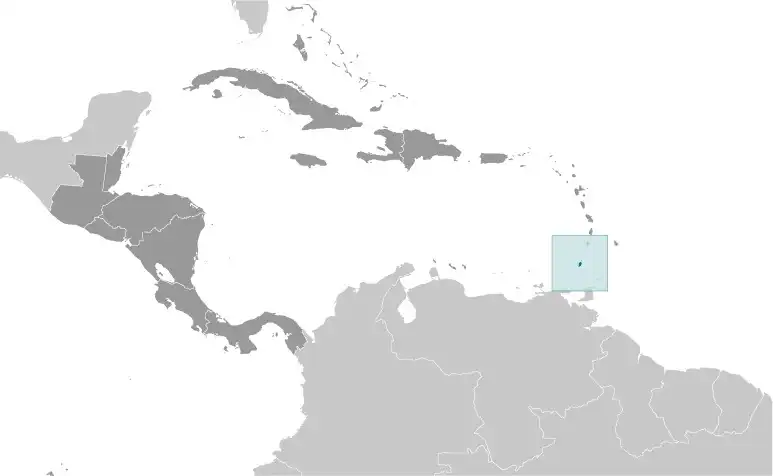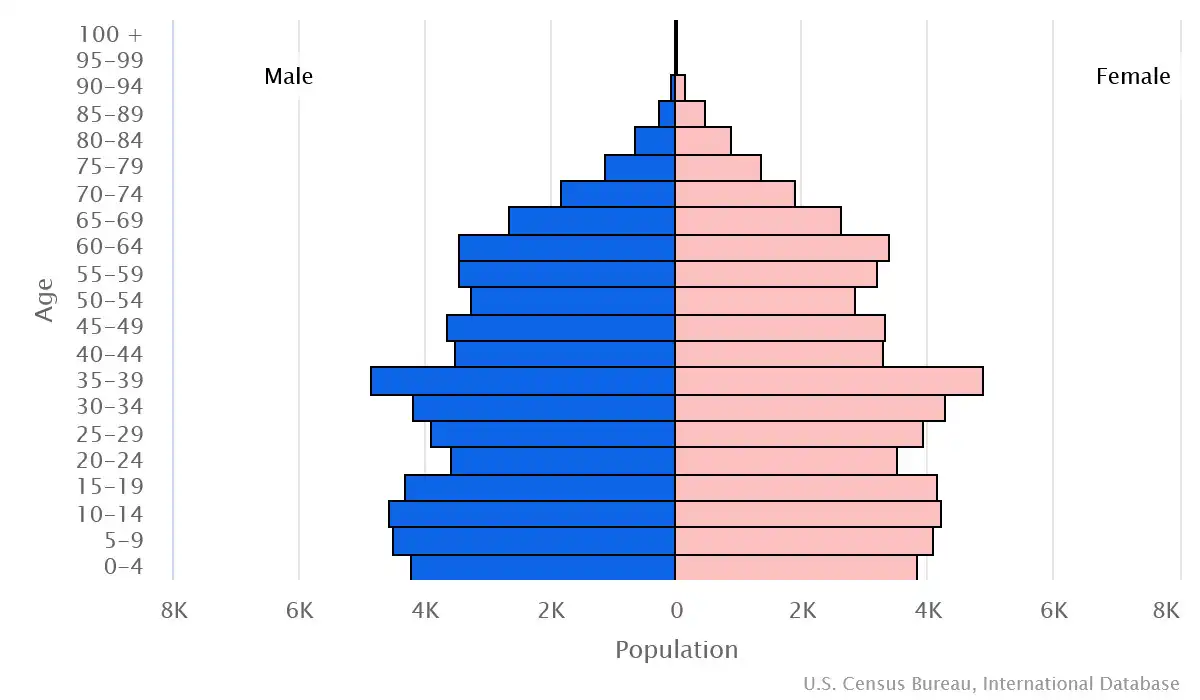
Grenada Country Profile
Key Facts of Grenada

| Government type: | parliamentary democracy under a constitutional monarchy; a Commonwealth realm |
| Capital: | Saint George's |
| Languages: | English (official), French patois |
Grenada Demographic Data
Ethnic Groups in Grenada(2011 est.)
Religious Groups in Grenada (2011 est.)
Age pyramid of Grenada

Grenada Economy Statistics
Economic overview of Grenada
small OECS service-based economy; large tourism, construction, transportation, and education sectors; major spice exporter; shrinking but still high public debt; vulnerable to hurricanes; emerging blue economy incentives
Grenada Real GDP (purchasing power parity) in Billion $
Grenada Real GDP per capita in $
Grenada's Exports & Imports in million $
Top 5 Import Partnerin 2022 (67%) of Grenada
Top 5 Import Commodities in 2022 of Grenada
- refined petroleum ⛽
- poultry 🍗
- plastic products ♻️
- wheat 🌾
- cars 🚗
Top 5 Export Partnerin 2022 (54%) of Grenada
Top 5 Export Commodities in 2022 of Grenada
- nutmeg/cardamom 🌰
- frozen fruits and nuts 🌰
- fish 🐟
- other fruits 🍎
- toilet paper 🛢️
Geography of Grenada
Map of Grenada

Land and Water Distrubtion of Grenada
Natural Resources of Grenada
- timber 🌲
- tropical fruit 🍍
Climate inGrenada
tropical; tempered by northeast trade winds
History of Grenada - a Summary
The indigenous Carib people inhabited Grenada when Christopher COLUMBUS landed on the island in 1498, but it remained uncolonized for more than a century. The French settled Grenada in the 17th century, established sugar estates, and imported large numbers of African slaves. Britain took the island in 1762 and vigorously expanded sugar production. In the 19th century, cacao eventually surpassed sugar as the main export crop; in the 20th century, nutmeg became the leading export. In 1967, Britain gave Grenada autonomy over its internal affairs. Full independence was attained in 1974, making Grenada one of the smallest independent countries in the Western Hemisphere. In 1979, a leftist New Jewel Movement seized power under Maurice BISHOP, ushering in the Grenada Revolution. On 19 October 1983, factions within the revolutionary government overthrew and killed BISHOP and members of his party. Six days later, US forces and those of six other Caribbean nations intervened, quickly capturing the ringleaders and their hundreds of Cuban advisers. Rule of law was restored, and democratic elections were reinstituted the following year and have continued since.
